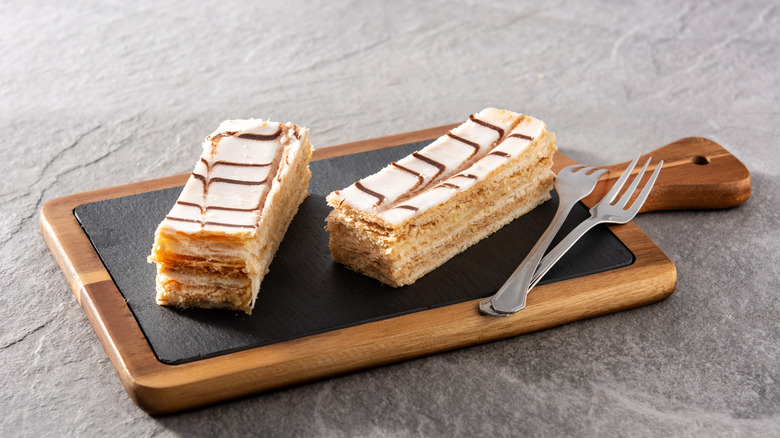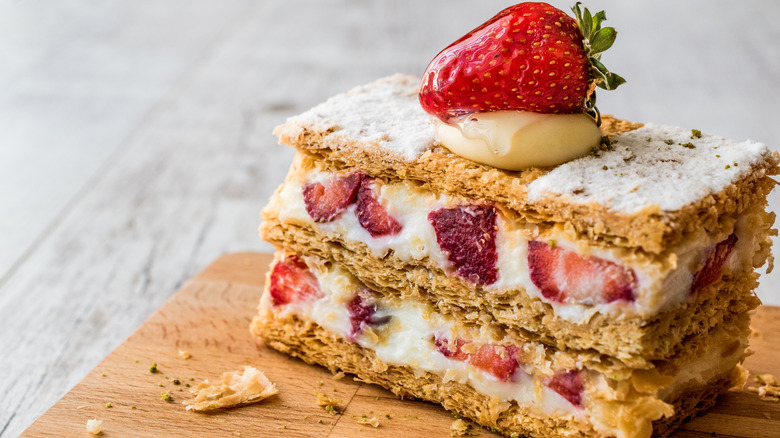The Alluring History Of The Mille-Feuille
Cultures often have their signature dessert. For Americans, it's apple pie. In Italy, it's a toss-up between tiramisu and cannoli. And in France, it's the beautiful mille-feuille. Made from pastry, cream, vanilla icing, a little cocoa, and almond fondant, the dessert perfectly accompanies a steaming cup of espresso. Epicure & Culture says mille-feuille can be found in quality Parisian patisseries, as well as restaurants and bakeries. Translated from French, mille-feuille means a thousand leaves — in this case, the leaves refer to the buttery, flaky layers of puff pastry that nestle the cream between them. These layers are then topped with powdered sugar or fondant icing. Updated mille-feuille recipes may have other ingredients, such as chocolate or fruit.
According to the Kylie Flavell, the French mille-feuille differs little from the millfoglie in Italy (also meaning a thousand leaves). And though the Napoleon typically has more layers of pastry and custard, it too is a very similar dish; though this dish's name may bring to mind the French emperor, it's likely related to the city of Naples in Italy (via Epicure & Culture). While the mille-feuille's dessert cousins have been influenced by other cultures, the mille-feuille is French through and through.
A thousand layers of perfection
When mille-feuille was first assembled is not known, but the first writings we have about it were by François Pierre de la Varenne in his 1651 cookbook "Le Cuisinier François," per Gourmandise. About 100 years later, chef Marie-Antoine Carême noted that the mille-feuille (or gâteau de mille-feuilles, as it was then called) was even then considered an ancient recipe, per Epicure & Culture. Other chefs also left their mark on the layered dessert, including pastry chef Adolphe Seugnot who considered mille-feuille his personal specialty in the 19th century, says Gourmandise.
Since its beginning centuries ago, Great British Chefs says the recipe has been tweaked with some chefs adding fresh berries and tropical fruit or salted caramel to the custard filling. And while mille-feuille is traditionally viewed as a dessert, they contend that it works well as a starter or main course if the sweet elements like dark chocolate are swapped for savory ones like wild mushrooms. Still, Epicure & Culture contends that if you are going to Paris, a stop at a patisserie for a slice of mille-feuille is a must, saying your first bite should be of the most traditional version of the dessert.

